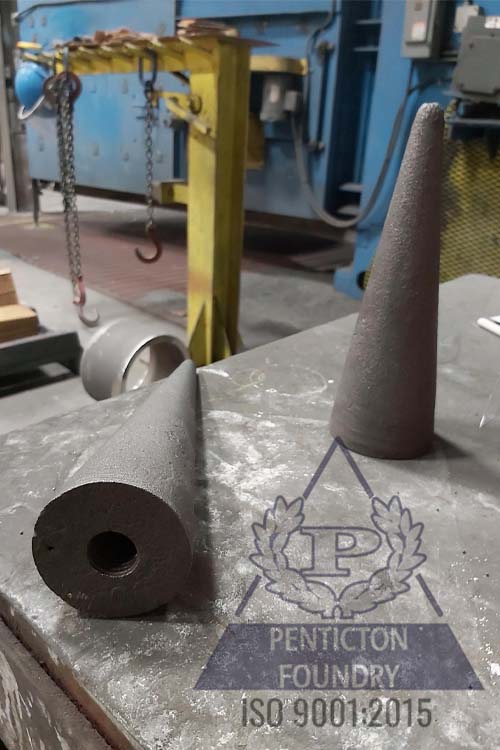Gray Iron ASTM A48 Class 20
on July 13, 2021ASTM A48 Class 20 (Related Standards – ISO 185/JL/150, SAE J431, EN-GJL-150) is a gray cast iron.

Gray iron has a long history, and is one of the most widely used metallic materials. This is due to its low cost, ease of production, and unique, beneficial characteristics. Over 14 million tons of gray iron castings were produced in 1967, which was 2.5 times more than all other castings combined [1]. In 2017, 49 million tons of gray iron was produced, which was 45% of the total casting production throughout the year [2]. Although materials and processes have been improved over the years, gray iron remains a dominant product throughout the world.
The term “gray iron” comes from its appearance when the material is fractured. The graphite flakes in the metallic matrix become visible. The fracture follows along the graphite flakes, creating the colour.
Read: If you’re interested in comparing gray iron and ductile iron read “Ductile Iron Versus Gray Iron Castings.”
Gray iron class 20 is one grade in a family of many. Chemistry ranges are not specified in the ASTM A48 standard. Instead, chemistry and hardness values listed in this data sheet would be typical for a class 20.
Composition
|
|
C |
Mn |
Si |
P |
S |
|
Min% |
3.25 |
0.5 |
1.8 |
0 |
0 |
|
Max% |
3.5 |
0.9 |
2.3 |
0.12 |
0.12 |
Physical and Mechanical Properties
|
UTS (ultimate tensile strength) |
20,000 psi (138MPa) |
|
Hardness (Brinell) |
~160 |
|
Density lb/in3 (g/cm3) |
0.258 (7.15) |
|
Thermal Conductivity Btu/hr·ft·F (W/m·K) |
27 (46) |
|
Specific Heat at 70F Btu/lb·F (J/Kg·k) |
0.12 (490) |
|
Thermal Expansion µm/m-K |
11 |
|
Melting Temperature |
2050 – 2120 F |
|
Compressive Strength Ksi (MPa) |
83 (572) |
Class 20 Advantages and Properties:
- Low cost
- Vibration and sound damping
- Increased corrosion resistance compared to unalloyed steels
- Typically 3-4 times stronger in compression than tension
- Ability to cast complex shapes and thin sections
Applications
- (Protective) Covers
- Frames
- Handwheels
- Hammers
- Handles
- Pulleys
- Pump Bodies
- Pipes
- Valves
Read: To learn more about gray iron, please check out our gray iron webpage.
[1] Krause, D. E., “Gray Iron-A Unique Engineering Material” Gray, Ductile, and Malleable Iron Castings-Current Capabilities, ASTM STP 455, American Society for Testing and Materials, Philadelphia, 1969, pp. 3-28.
[2] American Foundry Society, “Census of World Casting Production”, Modern Casting, p. 24, 2018.

